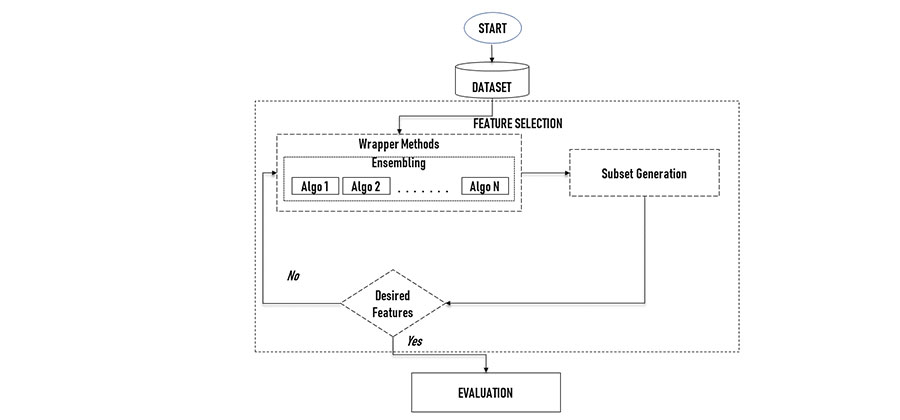


Indian Journal of Science and Technology
Year: 2020, Volume: 13, Issue: 22, Pages: 2189-2202
Original Article
Sourabh 1∗, Vibhakar Mansotra1 , Paramjit Kour1 , Sachin Kumar1
1 Department of Computer Science & IT, University of Jammu, Jammu & Kashmir, India
∗Corresponding author:
Sourabh
Department of Computer Science & IT, University of Jammu, Jammu & Kashmir, India
Received Date:01 May 2020, Accepted Date:15 June 2020, Published Date:24 June 2020
Background/Objectives: Owing to the continuous increase of electronic records and recent advances in machine learning, various automated disease diagnosis tools have been developed and proposed in healthcare sector. In the present study, an ensemble methodology using voting and boosting techniques has been proposed for optimal selection of features and prediction of infants' data of India. Methods/Analysis: For feature selection, the best-first search algorithm of wrapper technique has been used in addition to votingboosting. The proposed ensemble consists of combination of heterogeneous classifiers including Random Forest, J48, JRip, CART and Stochastic Gradient Descent (SGD). The effectiveness of the proposed ensemble and single classifiers have been investigated in terms of classification accuracy, precision, f-measure, recall, MCC and PRC area using varied k-fold cross validation. Findings: The results depicted that the proposed Voting-Boosting ensemble (k=15) outperforms the individual classifiers using selected features. Applications / Improvements: The proposed Voting-Boosting ensemble can be extended by using more state-of-the art classification approaches and further utilized for other healthcare datasets for enhancing the performance.
Keywords: Machine learning; ensemble; feature selection; wrapper; voting and boosting
© 2020 , Mansotra, Kour, Kumar. This is an open access article distributed under the terms of the Creative Commons Attribution License, which permits unrestricted use, distribution, and reproduction in any medium, provided the original author and source are credited.
Published By Indian Society for Education and Environment (iSee)
Subscribe now for latest articles and news.